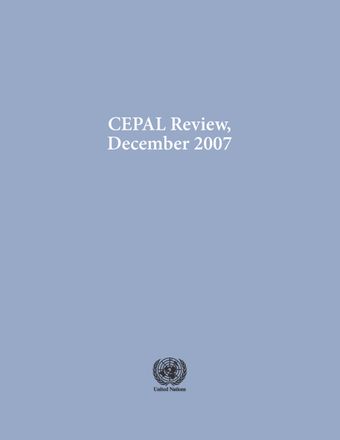-
A boom in a heterogeneous economy. Peru 2002-2006
- Source: CEPAL Review, Volume 2007, Issue 93, Dec 2007, p. 137 - 148
- Spanish
-
- 14 Dec 2007
Abstract
One part of Peru’s population failed to benefit from the economic boom in 2002-2006, among other reasons because of the deep- rooted productive heterogeneity present in the Peruvian economy. In 2006, microenterprises and self-employed persons with family workers accounted for 53.4 % of total employment, but productivity and average labour incomes were very low in that segment. As the corresponding incomes grew very slowly between 2002 and 2006, the gain in well-being was very slight despite the boom that was being experienced elsewhere in the economy. Looking to the future, it will be essential to develop policies targeted on microenterprises with competitive potential, to achieve rapid productivity growth that raises the well-being of their employees. It will also be necessary to recognize that the impacts of economic policy differ between microenterprises and larger firms, so that specifically targeted measures can be designed to improve microenterprise competitiveness.





